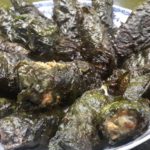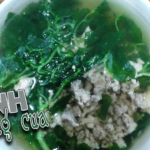The Baccaurea sapida, commonly known as the red ban flower, is adored for its delicate and rustic beauty. Many people choose this flower to adorn public landscapes and home gardens, and here we reveal the meaning behind this flower and how to cultivate it to bloom all year round.
1 Introduction to the Red Ban Flower and its Characteristics
The red ban flower, with the scientific name Baccaurea sapida, belongs to the Caesalpiniaceae family. It is a perennial plant with a rather slender woody stem and multiple branches covered in fine hair. Growing to an average height of 3 to 6 meters, its flowers are truly stunning. Each flower boasts three to four sterile stamens, a five to six lobed stigma, and red-striped petals with a sweet nectar that attracts insects for pollination. The leaves are heart-shaped, slightly rounded at the base, and taper to a point at the tip, while the fruit is flat and contains 12 to 13 seeds.
 Red ban trees usually bloom around April or May
Red ban trees usually bloom around April or May
The red ban tree typically blossoms in April or May, and due to its preference for mountainous climates, it is commonly cultivated in the northern mountainous regions.
2 The Significance of the Red Ban Flower
 The red ban flower symbolizes loyalty, sincerity, and simplicity
The red ban flower symbolizes loyalty, sincerity, and simplicity
The red ban flower is a symbol of loyalty, sincerity, and simplicity in relationships and marriages, representing the enduring bond and happiness between couples. Additionally, it brings good luck, prosperity, and peace to those who grow it in their gardens.
3 The Uses of the Red Ban Flower
Apart from bringing good fortune and beautifying spaces, the red ban flower is also a valuable medicinal herb that benefits humanity. It not only adds vibrancy to landscapes but also helps purify the air by absorbing dust and pollutants.
 The red ban flower is also used to treat various ailments in traditional medicine
The red ban flower is also used to treat various ailments in traditional medicine
In traditional medicine, the red ban flower is used to treat snakebites, expel worms, alleviate chronic coughs, and reduce abdominal distension, among other ailments.
The red ban flower is also edible and used in culinary preparations, adding a unique flavor to dishes typical of the mountainous regions, such as stir-fried bamboo shoots with red ban flowers, red ban flowers with chicken, and red ban flower salads.
4 How to Grow and Care for the Red Ban Flower
Planting the Red Ban Flower
Seed Germination Method: Sow the seeds and allow them to germinate for a year. Once the seedlings are strong enough, transplant them to your desired location, such as in your garden.
 You can propagate the red ban flower through seed germination or cuttings
You can propagate the red ban flower through seed germination or cuttings
Cutting Method: Choose a healthy branch from the mother plant, cut it, and soak it in a rooting solution. Then, plant the cutting in loose, moist soil.
Caring for the Red Ban Flower
 Water the tree 2 to 3 times a week, without overdoing it to avoid affecting the roots and flowering
Water the tree 2 to 3 times a week, without overdoing it to avoid affecting the roots and flowering
First, as the young tree has a fragile stem, use a stake to support it until it becomes sturdy.
Water the tree 2 to 3 times a week, avoiding overwatering to prevent root and flower damage.
Ensure the tree receives adequate sunlight for optimal growth. However, be mindful that it is susceptible to leaf-eating insects and borers, so consider using organic pesticides to protect it.
5 Scenic Spots to Admire the Red Ban Flower
 A street lined with red ban trees creates a poetic ambiance
A street lined with red ban trees creates a poetic ambiance
 Rows of red ban trees along the road add a touch of romance to the street
Rows of red ban trees along the road add a touch of romance to the street
 The red ban flower captivates passersby with its beauty
The red ban flower captivates passersby with its beauty
 The vibrant red of the ban flower leaves a lasting impression
The vibrant red of the ban flower leaves a lasting impression
 Blooming in late summer, the red ban flower adds life to the landscape
Blooming in late summer, the red ban flower adds life to the landscape
Above, we explored the meaning, characteristics, and cultivation methods of the red ban flower, a distinctive flower of the Northwest region. We hope this article has enhanced your understanding of this beautiful flower.

































